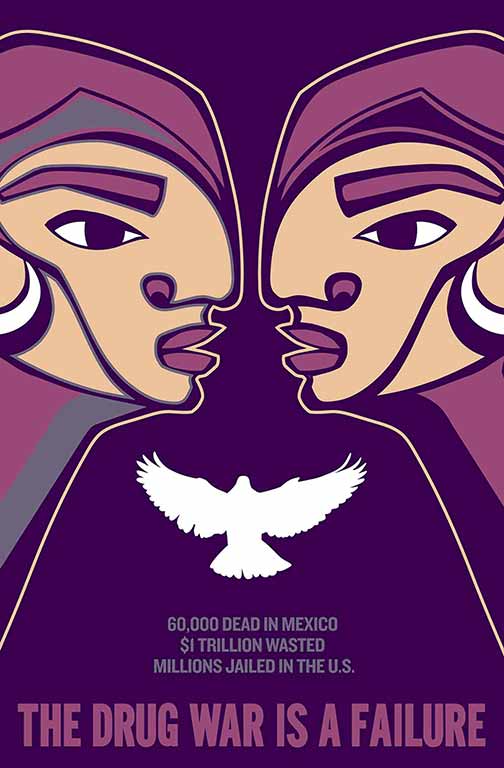I’m just back from New York City where I had the opportunity to visit Occupy Wall Street and connect with artists who are mobilizing on the Occupy front. INSPIRING!! Here is a recent piece I did for the Occupied Wall Street Journal
You can download my new poster (to the left) by clicking here.
As an artist that works in the social justice sector, the collective and powerful energy behind the Occupy Wall Street movement, which has suddenly erupted and spread across the country – the world- has created many openings for those of us who were engaged in these battles. This global social movement is one that is focused entirely around the true cost of capitalism, the excessive power of corporations and banks, and the economic devastation being imposed on people around the world. The fact that its even acceptable for us to critique capitalism in mainstream conversations and in mainstream media, opens many doors for activists artists, and for the entire social justice sector overall. I find it inspiring that this movement has at its core, a thriving arts and culture component.
I was inspired by an article I read in Colorlines today, where Rinku Sen (love her!) wrote:
There does turn out to be a time that a cause, identified with a particular tactic, activates people to an extent previously unseen. So many factors feed into that moment. Some elements are tangible…But some of these elements are intangible. We can’t predict them and we can’t control for them…The best we can do is open our eyes when it’s right on top of us…Organizations can speed up by shifting some of their priorities…They can be willing to share their planning and tactical skills even for an effort that they do not control and for which they will not likely get credit.
As a woman of color, and as a Latina working predominantly in spaces that affect la Raza, the current moment offers me the opportunity to talk about how Wall Street has affected our families. In case you didn’t see it, Pew Research center recently released a report on how Latino Household Wealth fell by 66% from 2005 to 2009. That means we lost 2/3 of our community’s assets! Now that’s an important reason why Latinos should care about the Occupy movement.
At the center of this debate is student loans, foreclosesures, debt, jobs, and the ability for all people to take care of their families. You can check out the data from the “We Are the 99%” Tumblr website to see what I mean. My next posters will focus on these areas, because I strongly believe that beyond the meta-narrative that is the “We Are the 99%”, we also need to talk about how these issues affect our communities in tangible ways. That is how we can educate people in our communities and build some buy in. I’m thinking about my parents for example, who are struggling with their mortgage. How can they understand that the 99% includes them? What will it take for them to really get it? – That is my personal challenge as an artist.
I believe that its important that artists and cultural workers in particular think of how we can participate in this anti-capitalismt movement in THREE WAYS:
1) Develop cultural projects (posters, street art, plays, stories, songs) that help ALL people (not just white people) see HOW the financial crisis is relevant to them and why NOW is a key moment. This is what I would call, “Intersectional Work” – where we address the financial crisis and its relationship to criminal justice, to migrant rights, and to the dramatic loss of wealth in communities of color.
2) Develop Cultural projects that build momentum to the narrative that is the 99%. The power of this large concept is key. We have to keep folks excited, and continue to push out larger concepts such as the 99%, or the “Wall Street is Ruining Your Life” meme. This meta narrative must continue to blossom and thrive. In other words, bust out the anti-capitalist work, that message is what lots of folks are hungry for.
3) Cultural projects attached to specific actions. I think its key to connect folks to specific things they can do now, such as the forgiveness of student debt, which I recently saw circulated on MoveOn. The fact that this movement is largely decentralized, means we can support many struggles at the same time. We don’t need just one campaign, we need thousands of them.
You can download my new poster by clicking here.




